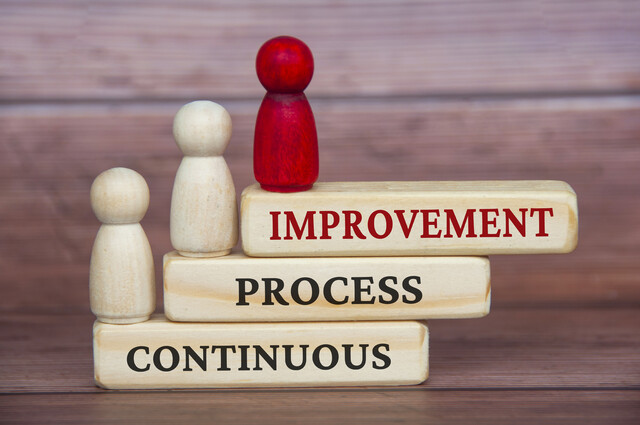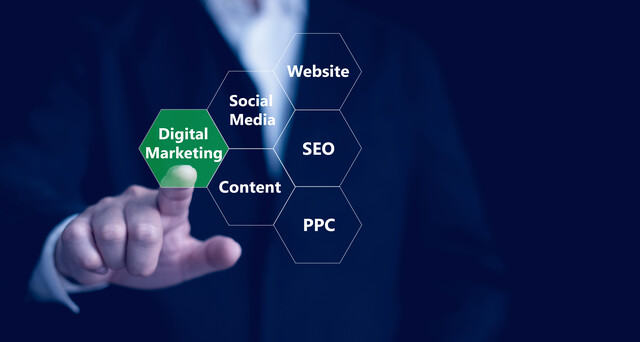The job of the marketer is to get a product or service into the hands of a customer. This means they must know the product, and know it well. Managing the product is one of the most important aspects of the marketer's job, and when their company makes new products, it is essential the marketer understands the product and the market it is intended for.
The first stage in the life cycle for a product is the development and introduction of a new product. New products fall in one of three categories.
1. Brand new product in a brand new market. This is fairly rare. An example would be the iPhone. Apple introduced an entirely new type of cellphone in an entirely new market.
2. Brand new product in an existing market. An example of this would be the Microsoft Zune. Microsoft attempted (and failed) to enter the music player market with a competitor to the iPod.
3. Improving an existing product and staying in the same market. A good example of this is Tide Pods. Tide laundry detergent is a well-known brand that has existed for almost 70 years. The pod product uses a concentrated amount of Tide detergent, plus fabric softener and stain remover.
Think!
Think of a consumer product that improved its existing brand.
For the purpose of this lesson, we will use the first category, the new product in the new market.
A brand new product is always risky, and a huge challenge for the marketer. A great idea at inception can change quite a bit through the stages until it hits the shelves. This is due to the many changes a product must make as it progresses from idea to sitting on a retail shelf.
There are six steps a product must take from idea to sale. All the while, the marketer must keep the customer's wants and needs in sight.
Here are the six steps:
1. Identifying the Need and Gathering Insight
2. Concept Development
3. Product Development
4. Advertising Development
5. Packaging Development
6. Introductory Marketing
Key Term!
INSIGHT
It is the most important factor in new product development
Step 1 � Identifying The Need And Gathering Insight
The process begins by identifying a need or want in the consumer marketplace. A marketer doesn't want to develop a product just because he thinks it will sell. The product must meet a need or want, and the marketer must gain consumer insight.
Let's use the example of Tide again. Tide has always been the most recognizable brand of laundry detergent. But every brand, even successful ones, wants to increase market share. So Proctor & Gamble, the manufacturer of Tide, looked at its customer to identify any new needs.
They saw that their customer wanted an easier way to do laundry. Pouring detergent into a cup could cause spills, and the amount of detergent to use could vary depending on wash size.
So P&G developed the Pod. The Pod is the perfect size for every wash, and it is very easy to just toss it into the machine. The Pod has been incredibly successful, even though it is one of the most expensive products on the market.
Once a marketing team has identified these insights, they should be used to determine whether they are actionable. The insights must be new and ground-breaking in order to move ahead to the next step.
Step 2 � Concept Development
Once the insight has been developed, it is time to move on to the development of the product concept. Each insight should be able to develop several concepts; otherwise, the insight isn't one worth pursuing. Once there are several concepts, the marketer would screen them to determine which concept will be best received.
Think!
Who in a company is involved in the production of a new product?
Step 3 � Product Development
Once the concept has been identified, it is time to develop the product. The development of the product must meet or exceed the need realized in step one. If it doesn't meet or exceed the concept, the product will fail.
Step 4 � Advertising Development
Now it is time for the marketer to consider advertising and promotion. Remember, the marketer must sell the "insight," not the product. What makes the product different? How does it meet or exceed the insight? A product must convey the insight and message -- otherwise it will fail.
The advertising or public relations firm should work alongside the development and marketing teams, so they understand the insight and message.
The advertising team should develop multiple campaigns, and test which one(s) are most successful. The ad must be captivating and unique, while also conveying the insight developed in step one.
Step 5 � Packaging Development
You will remember back in the last lesson about the importance of the seven "P's," one of which is packaging. This is also a form of advertising. A consumer will see the packaging on the shelf, and decide whether or not to buy.
Therefore, the packaging must also meet the insights. Similar to advertising, multiple packaging ideas should be proposed, with testing to determine which one is most successful. The packaging should cause the consumer to have an emotional response.
Large companies can use packaging firms to help with this stage. Of course, as with the advertising firm, the packaging firm should be brought into the process as early as possible, so they can work along side the company through the development stages.
Step 6 - Introductory Marketing
All marketing, advertising, and public relations should also meet the original insights developed in step one. The marketer must be able to convey that this product answers a need the company found in step one.
As you see, the insight is a part of every step. Wavering from this insight will cause the product to fail. It is not about the product; it is about the insight, and what wants or needs the product matches. Large companies often have an "insight manager" as a part of their marketing team.
Think!
What type of advertising works best for automobiles?
Why?
Once the company has the product, it is time to get it on the shelves. Normally, this is done in a retail setting.
What is Retail?
Retailing is what brings products and consumers together. You might think stores like Walmart, Target, and J.C. Penney are the only types of retailers, but there are many more. Most retailers are small businesses, comprising over 90 percent of retail establishments. In addition, service providers, such as doctors, dentists, and accountants are also retailers. Online companies, such as Amazon, are also retailers.
Some large retailers sell to both consumers and wholesalers, such as Home Depot. Some also manufacture their own products, such as Harley-Davidson and Pyrex.
Retailers are a crucial part of the sales process. Retailers make it possible to sell a product. A good retailer makes the shopping process an easy and fun one, and makes it easy for the consumer to find the product.
Retailers make this possible by employing salespeople, and using displays and signs to improve the shopping experience.
Retailing is also important to the economy. It is estimated that one in five Americans is employed by the retail industry, and that retail jobs account for the majority of new jobs created in the U.S.
Types of Retail
There are several types of retail establishments, each serving a particular market.
1. Department stores
Department stores offer many different products, all under one roof. These types of stores can sell many different types of consumer goods, such as clothing, electronics, toys, books, or jewelry.
Examples of Department stores:
Macy's
Best Buy
Bloomingdales
2. Discount Stores
Discount stores sell a variety of items at a discount. The discount retailer usually buys in bulk, and has a low profit margin.
Examples of discount stores:
Walmart
Target
K-Mart
3. Supermarkets
Supermarkets sell food products, as well as household items, alcohol and cigarettes. Supermarkets are usually large, and sell a wide variety of food items. They sell everything from baked goods and pasta, to frozen food and soft drinks.
Examples of supermarkets:
Kroger
Albertson's
Safeway
Publix
4. Warehouse Stores
Warehouse stores sell lots of products at a discount. Discount stores typically don't use much advertising, and their decor is very plain. Most stores are in actual warehouses, and it's not uncommon to see forklifts in the store moving product.
Examples of warehouse stores:
Costco
BJ's
5. Mom-and-Pop Stores
These are the smaller retailers that sell just about anything. As detailed earlier, the vast majority of retailers in the U.S. are small mom-and-pop establishments. These stores can sell anything, from clothing and jewelry, to toys and coffee. Small specialty stores that sell food are often called bodegas or convenience stores.
6. Specialty Stores
Specialty stores are large stores that specialize in one type of product. Salespeople at specialty stores are very knowledgeable about their products.
Examples of specialty stores:
Staples
Home Depot
Sports Chalet
7. Online Retailers
Online retailers are online companies that sell a wide variety of items. Consumers place their order online, and their product is shipped to them. This is often the most convenient type of shopping for consumers, especially if they can wait for the product to arrive.
Examples of online retailers:
Amazon
Apple
Staples
8. Malls
Malls congregate several types of stores in one place, usually anchored by one or more department stores. It is composed of several specialty stores, and offers convenience to the shopper by having several stores in one place.
Retail Marketing
You have learned how a product is developed, and what retailing is, along with the types of retail establishments. Now it is time to learn how to market in the retail industry.
Once again, the marketing field is filled with "P's." With retail marketing, there are four "P's,"
The four P's in retail marketing are:
-
Product
-
Place
-
Price
-
Promotion
First, the product:
The product is obviously the central aspect of the marketing strategy. A great deal of time and energy went into the development and production of the product. The product will be distributed in one of the types of retail establishments mentioned above.
Next, the place.
The marketer must decide where to sell their product. They can choose to be in a brick and mortar store, online, or both. Most retailers are small specialty stores, but these types of establishments only generate about 50 percent of total sales in the U.S.
The price.
The price is one of the most important aspects of the marketing process. A price that is too high will alienate customers, and a price too low will hurt profits. A marketer must be aware of the pricing of similar products from competitors, so they can remain competitive.
And finally, promotion.
Promoting the product is a key aspect in getting the product into the hands of the consumer. Promotions can be advertising, public relations, or online promotion. The type of promotion will depend on the product, along with testing done by the marketing team to determine which avenues will work best for the product. Promotion is often difficult for small businesses, as they simply don't have the budget of a larger business. Often the best promotional ideas for the small business is online, or via word of mouth. Referral programs can also be very successful.
Once the marketer has tackled the four P's, it is time to consider some other factors.
Remember, regardless of the size of the business, the customer is always the most important factor to the business. The marketing plan must revolve around the customer. And this phrase is often overused, but it is true. The customer is always right.
"Retail is detail"
When selling via retailing, it is important to focus on the details. The marketer will work with the retailer to spot which details of the product or packaging stick out most, and then they take advantage of those details.
Customer Service
It is imperative the customer is treated well and with respect. Again, the marketer will work with the retailer to determine which is the best way to do this. Good customer service will result in increased brand loyalty.
Location
We have all heard the term, "location, location, location." There is a reason it is said so often, and that is because it works. In this case, it can refer to both the location of the retailer, as well as the product's location in the retail store or establishment.

























